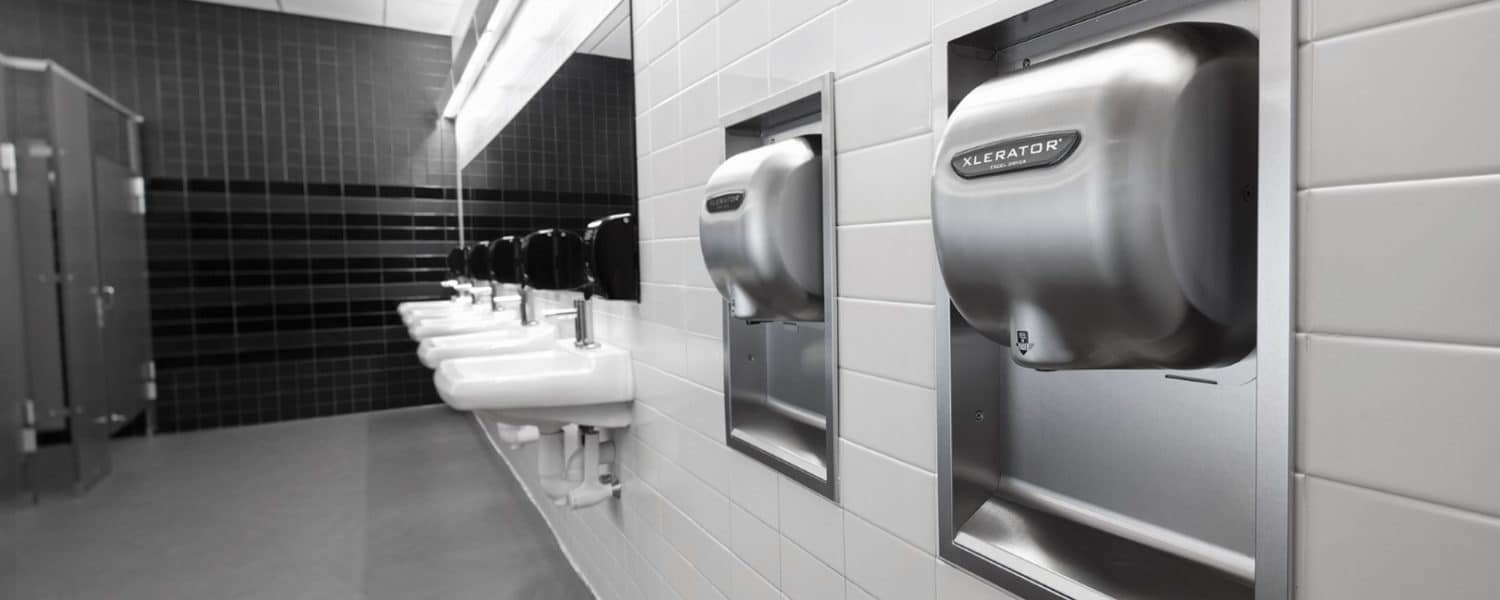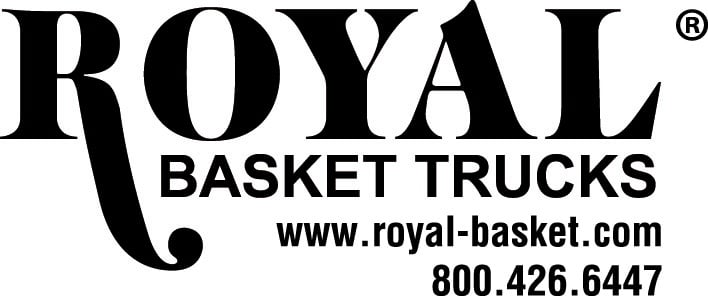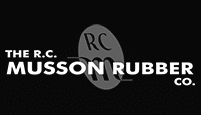By Rick Ritacco
For anyone in charge of a high-traffic building, the perpetual, twofold mission is clear: go green and save green. The facility’s keeper makes no move without the mission in mind, always on the lookout for opportunities to support it.
When facility managers think about potential areas for eco-friendly improvement, restrooms may not immediately come to mind. In fact, if it’s got manual paper-towel dispensers, proudly filled with recycled-fiber paper towels, managers may reason that the lavatory is as green as grass. In terms of the other, traditional green, thoughts about restrooms may border on resignation: They’re a messy, demanding cause of inevitable expense, and always will be.
The facts on this matter blow away the false beliefs. The environmental impact of paper towels begins with their production and continues long after their use. High-speed, energy-efficient hand dryers offer a 95 percent cost savings versus paper towels, eliminating the associated labor, maintenance and waste. These hand dryers use significantly less energy than paper towels, which require 10 times the amount of energy as the dryers per hand dry. This represents a 90 percent energy savings compared to paper towels.
A leader in sustainability, the manufacturer of the original, patented, high-speed, energy-efficient hand dryer was the first to commission a comparative product Life Cycle Assessment of this type of hand dryer (peer reviewed to ISO 14040 standards), which confirmed that this innovative product reduces the carbon footprint of hand drying up to 75 percent versus even 100 percent recycled paper towels.
If These Towels Could Talk
At first, some might wonder how this can be. After all, side by side, an electrical appliance looks costlier and more power hungry than a roll of recycled paper—and therein lies the deception. Though silent and plain to the eye, a paper towel would have quite a tale to tell if it could. When considering restroom paper towel use, it’s important to understand the full journey of this unassumingly brown sheet. Where did it come from? Where will it end up? Typically, a paper towel’s short life cycle looks like this:
1. Material production
Today, most paper comes from reasonably sustainable sources, either recycled materials or commercially grown forests. However, trees must still be cut (for virgin paper), and recycled materials must be collected, sorted, cleaned and processed.
2. Transportation
Trucks must carry tons of logs and other raw materials to production sites, deliver cases of the finished product to businesses and regularly carry away the used product (read: trash).
3. Manufacturing process
All paper is born through mechanical or chemical pulping, then sorted and packaged using any number of materials. Again, though much greener than in decades past, these processes inevitably impact the environment.
4. Use
Here is where paper towels may seem to earn their green star. They don’t expend much energy on the job, but what end users don’t see is the energy it took just to reach the workplace. And once used, who knows where the towel goes… did that toss even reach the trash bin? Paper towels can make quite a mess of restrooms, littering the floor, blocking sink drains and, for a bonus expense, clogging toilets. Then, after a string of high-maintenance situations, there’s the constant, costly restocking.
5. End of life
Some take the term recycled to mean recyclable. Unfortunately, they mean very different things. Even a 100 percent recycled paper towel—that is, one made completely from recycled content—has no postconsumer value. Unless its weave also contains fibers of gold, a used paper towel is destined for one place: the landfill.
As one can see, a paper towel incurs a host of monetary and environmental costs at each phase of life. Unlike a single investment in high-efficiency hand dryers, a commitment to stocking paper towels means an endless loop of repetition and expense, from creation through disposal. The countless facilities worldwide that have switched from paper towels to the original, patented, high-speed, energy-efficient hand dryer have happily ended this resource-sucking cycle for good.
Green…and Clean
While the cost-savings and environmental benefits of high-speed, energy-efficient hand dryers are clear, there are many misconceptions about the hygienic efficacy of different hand drying methods. It is important that distributors and end-users are comfortable and assured that high-speed, energy-efficient hand dryers are both sustainable and hygienic, as evidenced by the findings of independent, third-party testing conducted by several leading institutions: Mayo Clinic, Antimicrobial Test Laboratories and Laval University:
- The Mayo Clinic’s comprehensive study comparing four different hand drying methods regarding the removal of bacteria from washed hands concluded: “There are no differences in the efficiencies of removing bacteria from washed hands when hands are dried using paper towels, cloth towels, warm forced air or spontaneous evaporation.”
- The manufacturer of the original, patented, high-speed, energy-efficient hand dryer called on the expertise of microbiologist Dr. Benjamin Tanner, president and CEO of Antimicrobial Test Laboratories (now Microchem Laboratory), to conduct a study to assess the bacteria level comparisons for this type of hand dryer versus paper towels. The study evaluated bacteria levels on the hands of volunteers who washed their hands then dried them with either paper towels or a high-efficiency hand dryer with the HEPA Filtration System. This system creates a clean air flow by removing 99.97 percent of bacteria at 0.3 microns from the air stream, providing a hygienic hand drying experience with the added benefit of improved air quality in the room. The results indicated that the method of hand drying – paper towel or hand dryer – did not significantly affect bacteria levels on hands.
- An international study from Laval University in Quebec and published in The American Journal of Infection Control, found 17 species of bacteria on unused, recycled paper towels. The conclusion of that study states, “This pilot study demonstrated that a large community of culturable bacteria, including toxin producers, can be isolated from unused paper towels and that they may be transferred to individuals after hand washing. This may have implications in some industrial and clinical settings as well as in immunocompromised individuals.”
Damp, used paper towels pile up in and around restroom trash receptacles on the floor, creating an environment in which bacteria can thrive, and, when improperly disposed of, can clog toilets and urinals. Trough-style hand dryers catch and hold water blown off users’ hands, leaving pools of stagnant water where bacteria can grow. Hands-under, high-speed, energy-efficient hand drying is the most efficient and sanitary method for drying hands after washing.
To facility managers everywhere, pondering new ways to fulfill their green building mission, it’s time go ahead and crumple up those long-standing myths about the power of paper. Simply put, it’s time to throw in the towel.
Rick Ritacco is the director of marketing at Excel Dryer, Inc., which has been manufacturing the finest American-made hand dryers for over 50 years, www.exceldryer.com.














